Hiking Up Mainland Spain's Highest Peak: Mulhacén
Earlier this month, while contemplating the possibility of doing something awesome before leaving Granada, it dawned on me that I needed to do something awesome.
I would climb Mulhacén, and I would drag my flatmate with me, who, as it turned out, was more than willing so ultimately no dragging was necessary, and let's be honest I wouldn't have got far.
This post is about how we did it, and how we would do it differently next time...
How to get there
Unless you have a car, you have to take the 2-hour bus from Granada to the village of Capileira and then a small minibus from there to the 2,700m high Mirador de Trevélez, another half hour up the snaking road. You must reserve seats on the minibus for the way up and the return journey, otherwise you'll be spending another night at Poquiera Refuge.
Alternatively you can get off the bus in Pampaneira, the other Alpujarra village two stops before Capileira. This is what we did, and from here we walked up the hillside and were treated to gorgeous views of the whitewash villages peeping through lush-green trees. We passed Bubión on the way, and picked some fresh figs from the trees, though there weren't many left. The route took about an hour and a half, but we were moving very slowly. Definitely worth the detour.
For bus timetable information, visit alsa.es.
To reserve your seats on the minibus, call this number –958763090 – and ask to speak to Paco, who speaks English.
The Refuge
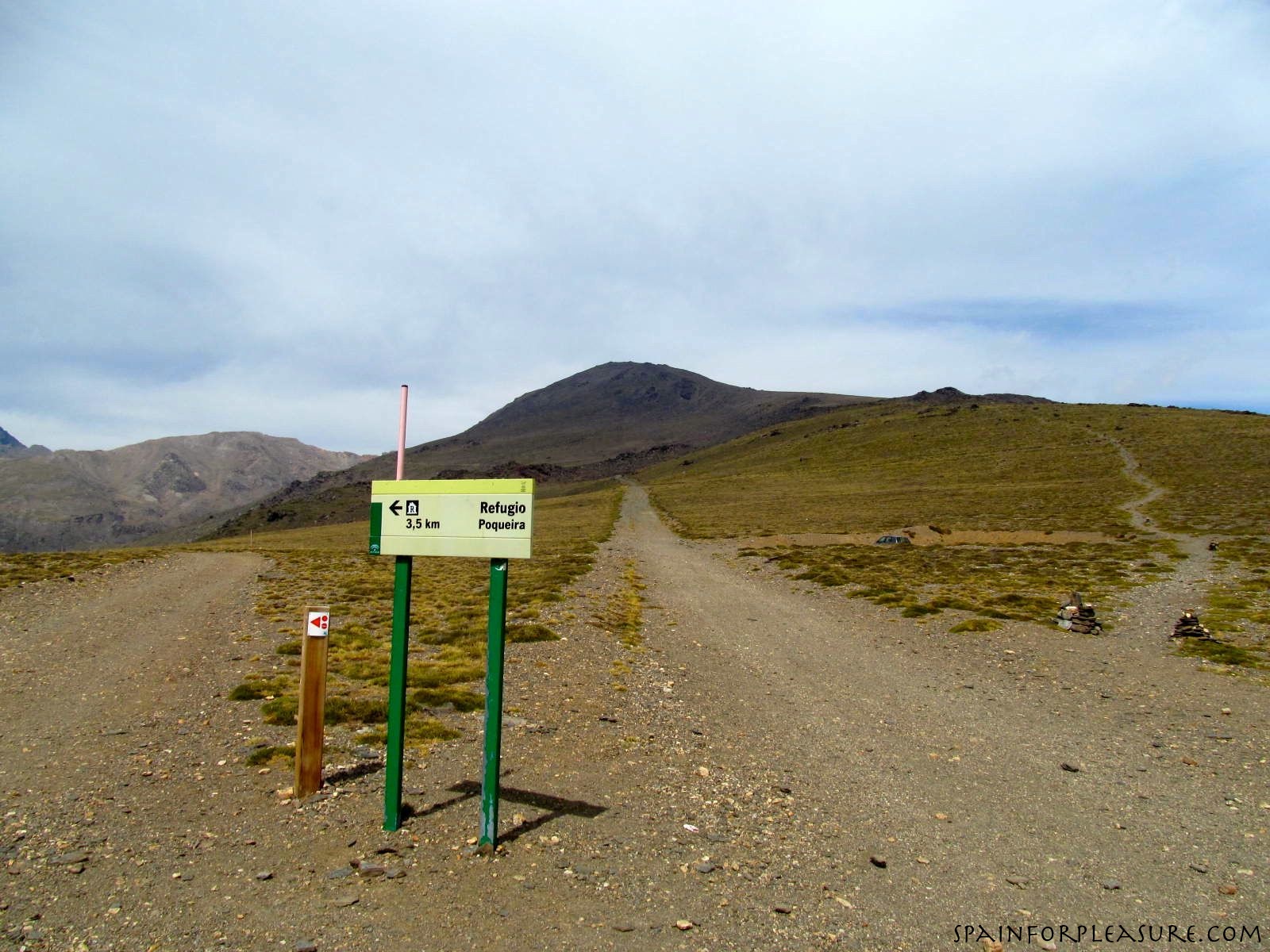
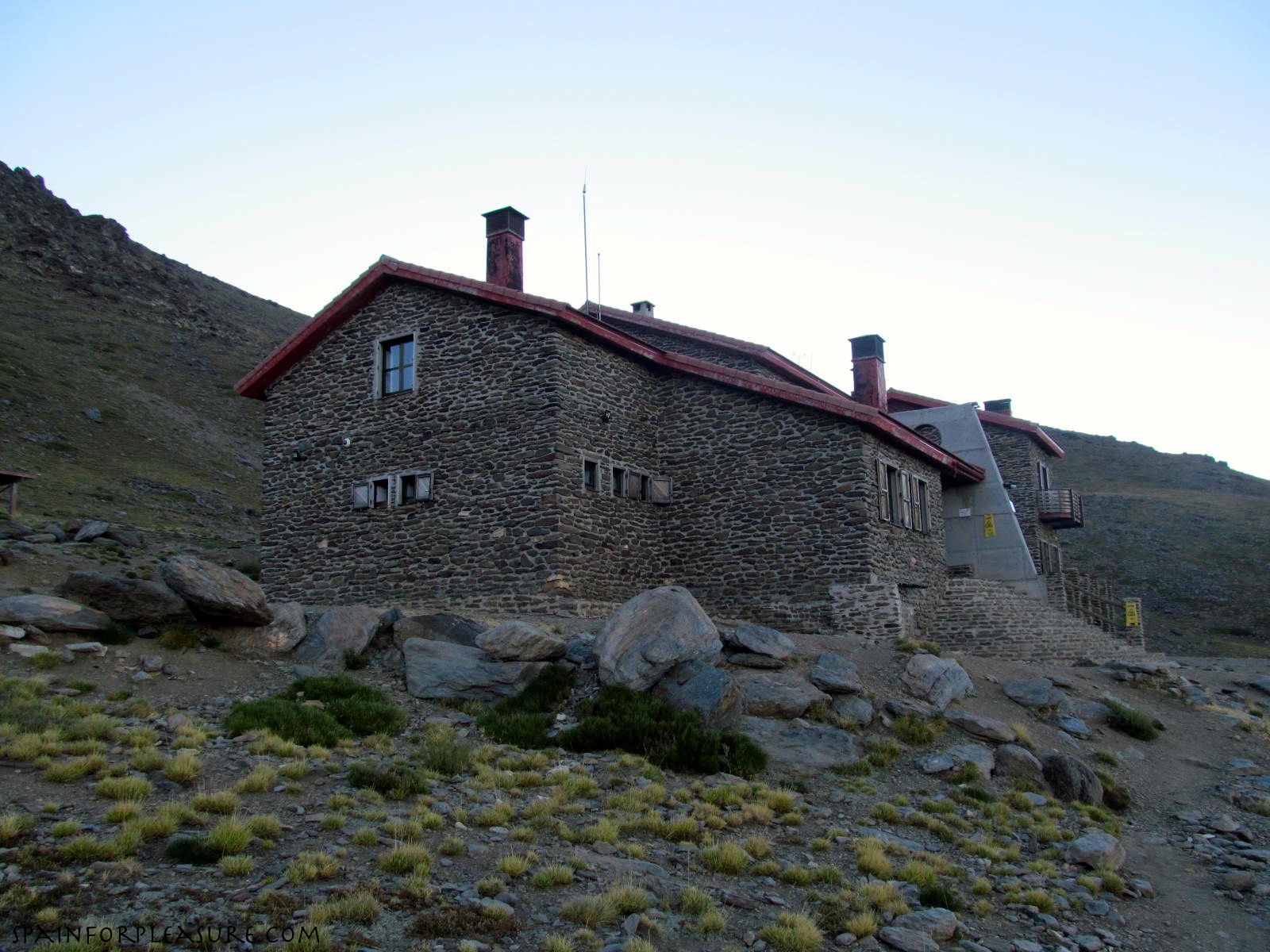
There are two refuges that will put hikers up for the night, and the most popular is Refugio Poqueira, just under an hour's walk from the Mirador de Trevélez.
It's an impressive setup: a stone-built building with room for 80 (though it's rare for all 80 beds to be occupied at once), hot running water, electricity, a phone charging station, central heating, friendly staff and a loveable cross-eyed cat.
The atmosphere in the refuge was warm and welcoming; guests were clearly upbeat about the adventure that the next day held in store, and that typical Spanish camaraderie was flying around the dining area.
We had opted for the three-course meal with our reservation. Out first was a textbook vegetable and noodle soup, followed by a bowl of perfectly cooked paella, then sausages and chips which were unfortunately quite dry, with the tasty and traditional natillas - essentially a rich tea biscuit plonked on top of some custard - to round it off. Had we known there were €8 pizzas available we might have skipped the meal. Beers were available too, but marked up in price.
For breakfast there was cereal, toast, cakes and plenty of coffee. No eggs unfortunately, but it did the trick.
Getting to the top
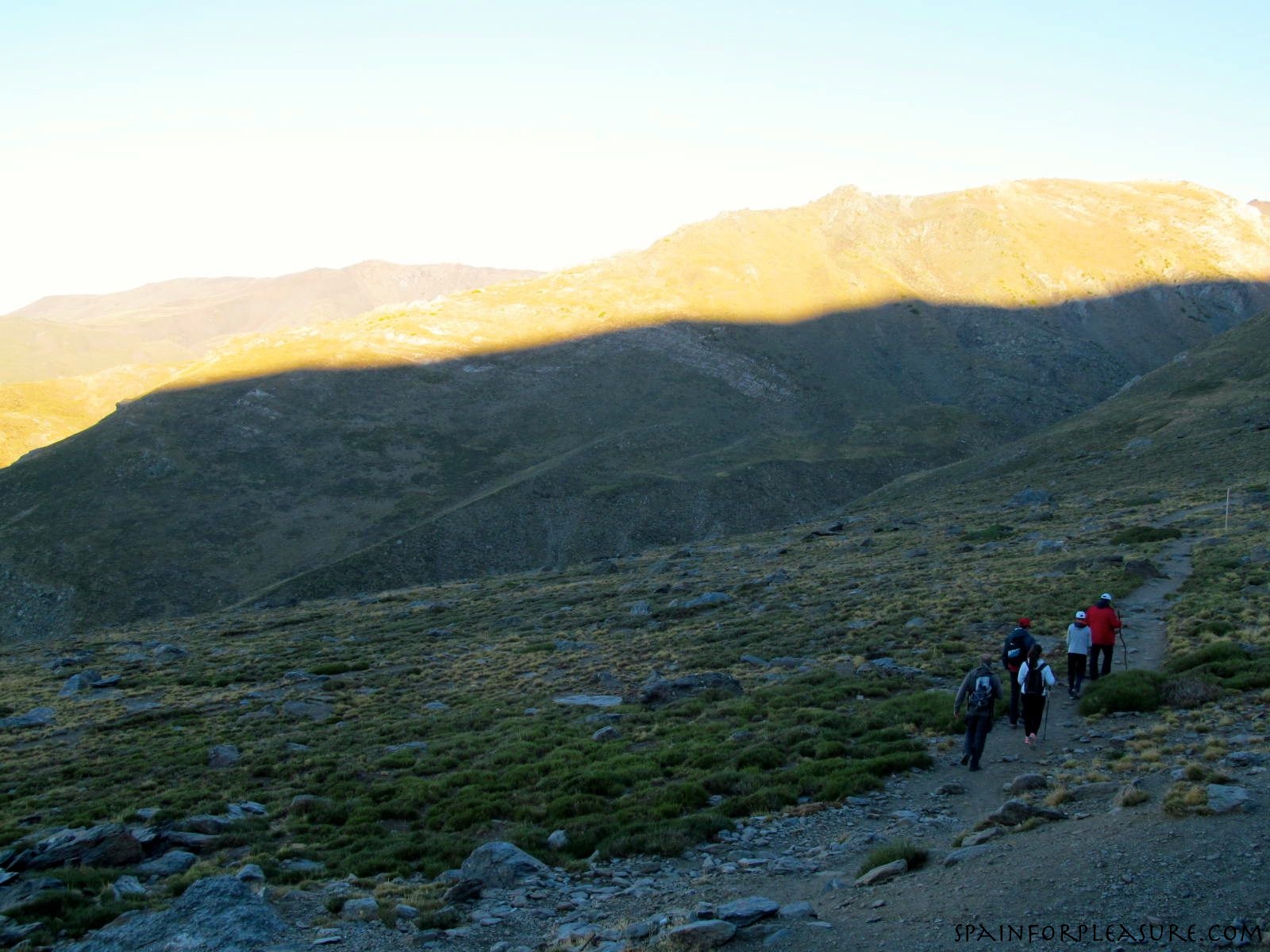
The terrain is rocky and the gradient steep virtually from the start, if you ascend the trail leading up the west side of the mountain. Alternatively you can double back 3.5km and take the flatter and more gradual 'humpback' trail up the centre.
We chose the tougher route while we had the energy to burn off. The steepness slowly increases and pretty soon you find yourself gasping for air. I went full Dad and walked as fast as I could while my friend lagged between frequent breaks. He caught up eventually.
About halfway the ground levels out and you come to a grassy, marshy bit. It was here that we realised we were meant to be following the piles of stones. Once back on course the gradient quickly rose, and the 'scree' - a new word for both of us - became more and more slippery.
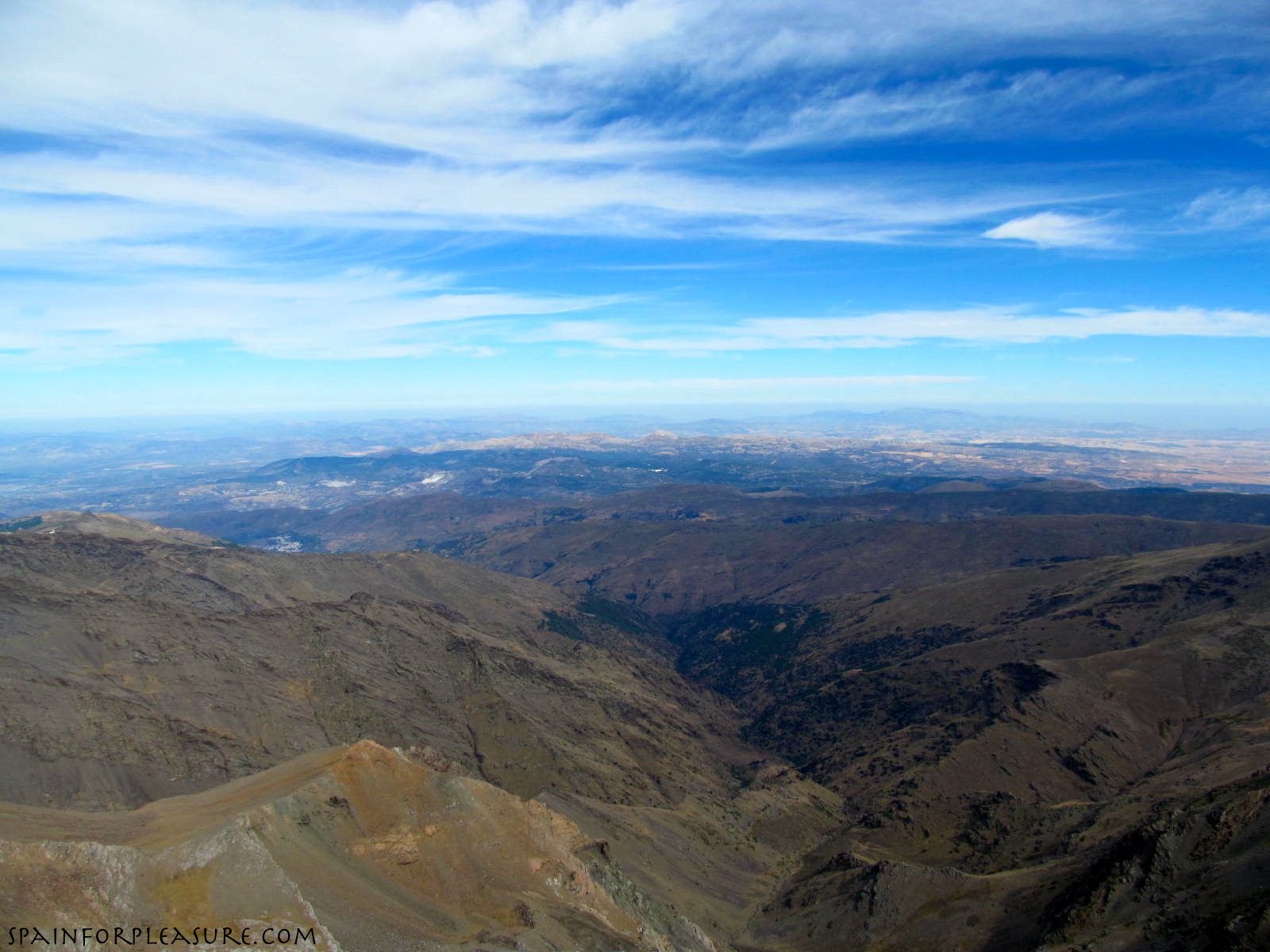
We began to feel the burn, and judging from our deep breathing and feeble attempt at conversation, which had more or less deteriorated into grunts, the altitude was beginning to take its toll too. But still we climbed, and on we grunted. Not far to go.
Finally we reached the summit of Mulhacén, a staggering 3,479m. We were exhausted and definitely a little light-headed, but most of all, we were joyful... and triumphant! Standing at the top of the Iberian peninsular, it sunk in how high we'd climbed. Even the surrounding mountains, towering in their own right, appeared meagre in size. We celebrated the occasion with a couple of hard-earned beers, but had been so taken by the views and keen to rest that we neglected to have someone take a photo of us toasting our achievement.
We did, however, manage to remember to photograph each other after everyone else had left.
Total time from refuge to summit: 3 hours.
Getting back down
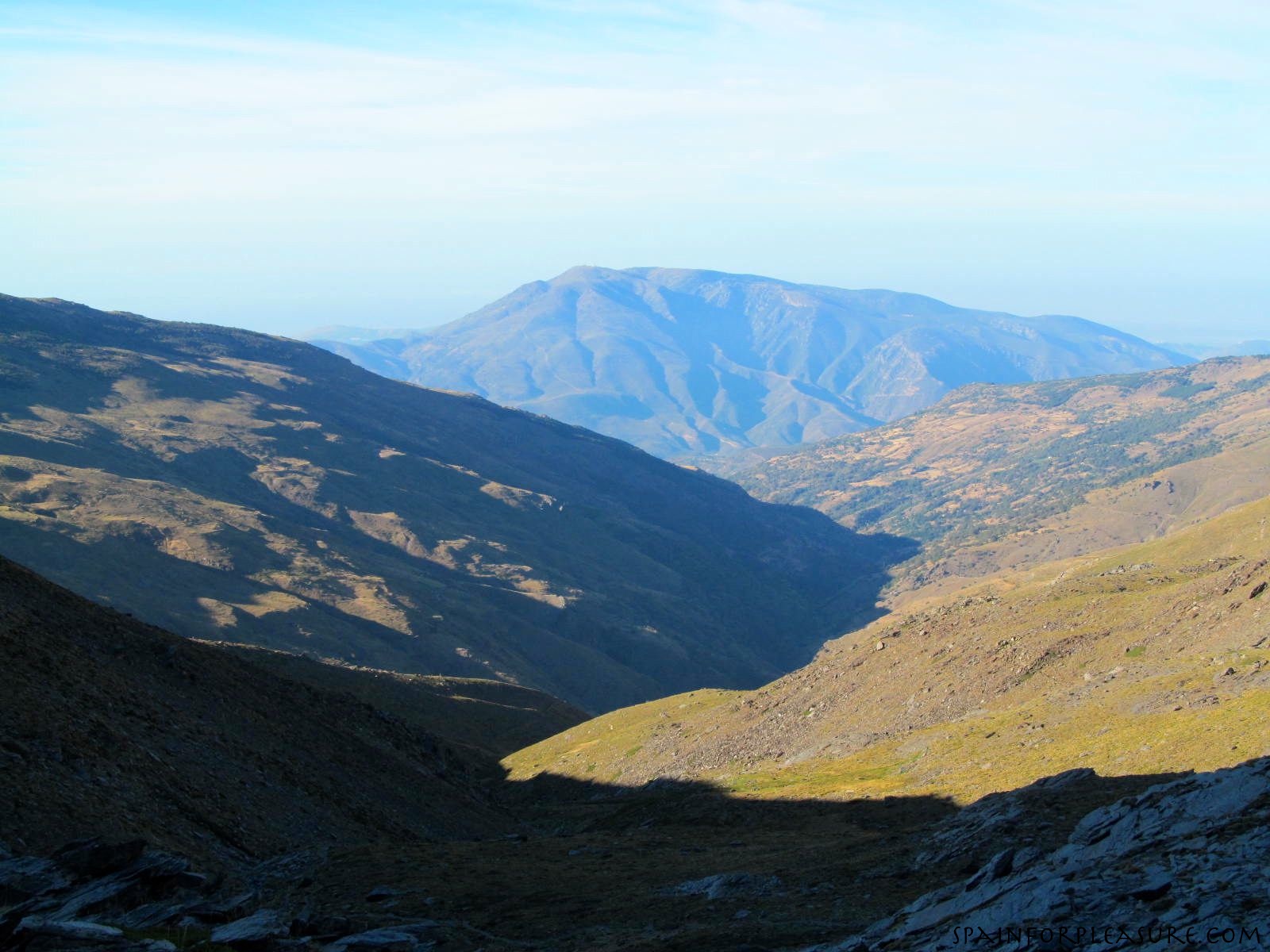
Quite literally over the hump, we began our descent down the humpback (central trail) of the mountain - a treat after such a draining slog to the top. It soon became wearisome though, as we felt we were making little progress and began to worry about the bus we had to catch from Capileira to Granada later in the afternoon (unfortunately there had been no more places on the minibus returning at 4pm, thus I stress the importance of booking at least a day in advance).
We ran into a couple who'd come from Trevélez and assured us it would only take two hours (leaving us plenty of time) to get there by descending through the valley on the right of the mountain. They almost had us convinced, but on closer inspection - a good 3kms 'off-road' - we decided to turn back, as harrowing scenes from '127 hours' and even 'Alive' were jokingly recalled and then actually considered possible (verdict: I, being the skinniest, would probably die first, then a rescue helicopter would appear in the distance just as my friend swallowed the first forkful of dead Josh).
Back on course, we walked briskly down the humpback to the Mirador de Trevélez, where, upon reaching, we decided we still had enough time to reach Trevélez - 2 hours according to the signpost - before the last bus back to Granada departed.
Wrong. We walked fast, and it took us closer to three hours, having run the last 2km. The terrain doesn't seem strenuous at first, but that changes as soon as you get to the point of no return. From here the scree kicks in. And there is nothing nice I can say about scree. The steepness increases too, and pretty soon your calves and knees are in a world of pain.
Two kilometres, one pissed off donkey and one dead sheep later, we were in Trevélez - 10 minutes before the bus to Granada was supposed to leave. We'd made it.
One hour later, the bus arrived.
Why it was so late? In Spain there's no reasonable explanation for lateness; it's just 'Spanish time'. But finally we were away, winding down the stunning Alpujarras mountain roads once more, stopping at several tiny villages along the way. Every muscle in our bodies throbbed in pain, but I had definitely done something awesome.
Next time though, I'll book the minibus.
